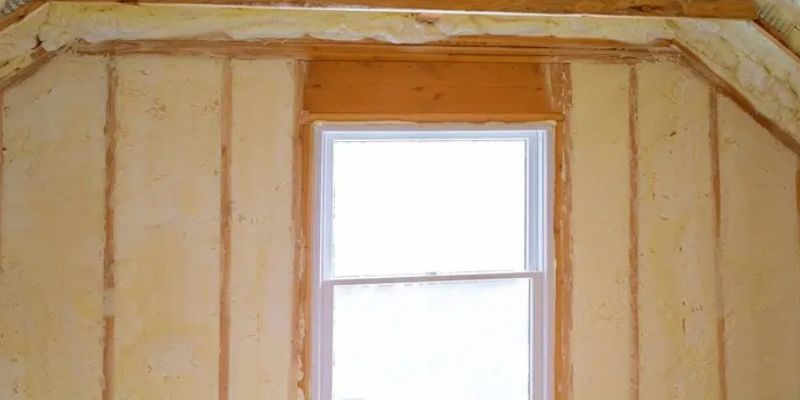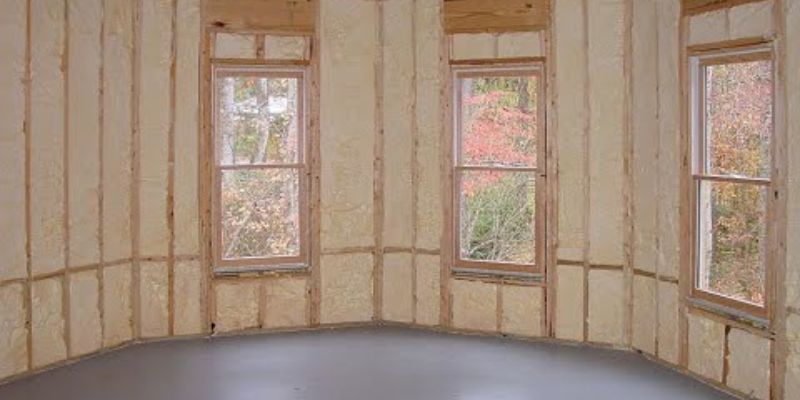nternal wall insulation is becoming a popular choice among homeowners in Ireland who want to make their homes warmer, more comfortable, and more energy efficient. As energy prices continue to rise across the country, many people are looking for practical ways to reduce heat loss and lower their heating bills. Internal wall insulation is one of the most effective solutions, especially for older Irish homes that were built without modern insulation standards.
In this article, we will explain what internal wall insulation is, why it is useful in Ireland, the key benefits, how the installation process works, and what homeowners should keep in mind before starting the project.
What Is Internal Wall Insulation?
Internal wall insulation is a method of adding insulation material to the inner side of a home’s external walls. Instead of insulating from the outside, the insulation is installed inside the rooms. This helps prevent heat from escaping through the walls, keeping the home warmer for longer.
In Ireland, many older homes, especially those built before the 1980s, have solid walls with little or no insulation. These walls lose a significant amount of heat, which leads to higher energy bills and cold, uncomfortable rooms. Internal wall insulation is a practical way to upgrade such homes without major external construction work.
Why Internal Wall Insulation Works Well for Ireland

Ireland has a cool, damp climate for most of the year. Homes often experience cold drafts, condensation, and heat loss, especially during the winter months. Because of this, insulation plays a major role in improving living conditions and preventing heat from escaping.
Internal wall insulation is especially helpful in Irish houses for several reasons:
-
Many Irish homes still have poor insulation.
-
Weather conditions make heat retention important all year round.
-
Insulating from outside is not always possible, especially for terraced houses, protected buildings, or homes in tight urban areas.
-
Internal insulation provides flexibility for homeowners who want to improve one room at a time.
This makes internal wall insulation a practical and cost-effective option for homeowners across Ireland.
Benefits of Internal Wall Insulation in Ireland
1. Better Comfort in All Seasons
One of the biggest advantages is improved comfort. Insulated walls reduce cold spots and drafts, making rooms feel warmer and more pleasant. Even during the coldest months, your home stays at a more stable temperature.
2. Lower Heating Bills
Internal wall insulation reduces the amount of heat escaping through the walls. This means you use less energy to heat your home, leading to noticeable savings on energy bills. Over time, the insulation pays for itself through reduced heating costs.
3. Reduced Dampness and Condensation
Many Irish homes suffer from condensation on cold walls, which can lead to mould and damp problems. By adding insulation, the inside wall surface becomes warmer, reducing the chances of moisture forming.
4. Adds Value to the Home
Energy-efficient homes are more attractive to buyers. Improving your Building Energy Rating (BER) can increase the value of your property. Internal wall insulation is a strong investment that improves both comfort and resale value.
5. Suitable for Older Buildings
Some homes in Ireland cannot use external wall insulation due to planning restrictions, heritage rules, or shared walls with neighbours. Internal insulation becomes the best alternative for improving energy efficiency in these cases.
How Internal Wall Insulation Is Installed
The installation process may vary depending on the insulation method, but the general steps are similar:
-
Assessment – A professional insulator surveys the home, checks the walls, measures heat loss, and identifies any damp issues.
-
Preparation – Furniture is moved, radiators or electrical fixtures may be temporarily removed, and walls are cleaned.
-
Insulation Boards Installed – Insulated boards or layers are fixed to the internal walls using adhesive or mechanical fixings.
-
Vapour Control Layer Added – This prevents moisture from entering the insulation.
-
Plastering and Finishing – The wall is covered with plasterboard or skimmed to give it a smooth finish.
-
Painting and Decoration – After drying, the wall can be painted or decorated like a normal internal wall.
The process is clean, straightforward, and usually completed within a few days.
Things to Consider Before Installing Internal Insulation

While internal wall insulation is very effective, homeowners in Ireland should keep a few things in mind:
1. Slight Loss of Room Space
Because insulation boards are added to the inside of the wall, a small amount of floor space will be lost. This is usually minimal but should be considered for smaller rooms.
2. Managing Electrical Outlets
Sockets, radiators, and switches may need to be moved forward. A professional installer will handle this.
3. Addressing Damp First
If there is existing dampness or water penetration in the wall, it must be fixed before installing insulation. Insulating over damp walls can make the issue worse.
4. Choosing a Qualified Installer
To ensure proper insulation and long-term performance, it’s important to hire an experienced and certified insulation professional in Ireland.
Why Homeowners Across Ireland Are Choosing Internal Wall Insulation
More people in Ireland are turning to internal wall insulation because it offers a combination of comfort, energy savings, and long-term value. It is especially helpful for older homes in Dublin, Cork, Galway, Limerick, Waterford, and rural areas where internal insulation is more practical than external solutions.
With rising heating costs and colder winters, improving insulation has become a priority for many families. Internal wall insulation is a smart way to make your home warmer, healthier, and more energy efficient—without major construction or huge expenses
Conclusion
Internal wall insulation is one of the most effective ways to improve comfort, reduce heat loss, and lower energy bills in Irish homes. With Ireland’s cool and damp climate, insulating from the inside offers a practical solution for both old and modern houses, especially where external insulation is not possible. Although you may lose a small amount of room space, the long-term benefits—better warmth, healthier living conditions, and increased energy efficiency—make it a smart investment for homeowners across the country. By choosing a qualified installer and addressing any damp issues beforehand, internal wall insulation can transform your home into a warmer, more efficient, and more comfortable place to live

